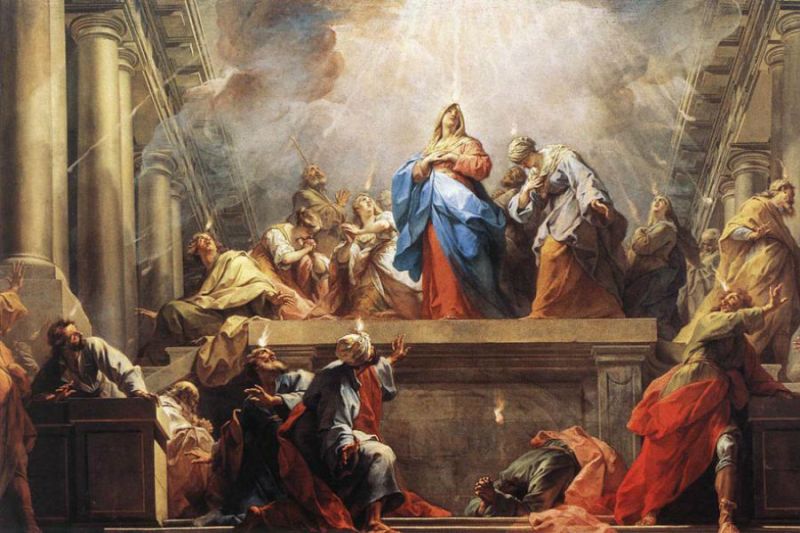 Jean II Restout’s Pentecost (1732)
Jean II Restout’s Pentecost (1732)
Birmingham, Ala., May 13, 2021 / 10:55 am (CNA).
The feast of Pentecost falls May 23 this year, and the Eternal Word Global Catholic Network has made available an e-book about the gifts of the Holy Spirit and the Novena to the Holy Spirit set to begin Friday.
“The Novena in honor of the Holy Spirit is the oldest of all Novenas, since it was first made at the direction of our Lord Himself when He sent His apostles back to Jerusalem to await the coming of the Holy Spirit on the first Pentecost,” said EWTN’s Pentecost webpage.
“It is still the only Novena officially prescribed by the Catholic Church,” said EWTN. “Addressed to the Third Person of the Blessed Trinity, it is a powerful plea for the light, strength and love so sorely needed by every Christian, especially in these challenging times.”
Interested readers may receive the e-book “The Seven Gifts of the Holy Spirit” by submitting a form available on the EWTN website’s Pentecost webpage, located in a section dedicated to Seasons and Feast Days.
Pentecost, one of the most important feast days of Christianity, marks the end of the Easter season and celebrates the beginning of the Church.
It celebrates the person of the Holy Spirit coming upon the apostles, Mary, and the first followers of Christ, who were gathered together in the Upper Room in Jerusalem. A “strong, driving” wind filled the room where they were gathered and tongues of fire came to rest on their heads, allowing them to speak in different languages so that they could understand each other.
Pentecost is considered the birthday of the Church. Peter, the first pope, preached for the first time and converts thousands of new believers. The apostles and believers, for the first time, were united by a common language, and a common zeal and purpose to go and preach the Gospel.
The Seven Gifts of the Holy Spirit are traditionally understood to be wisdom, understanding, knowledge, counsel, fortitude, piety, and fear of the Lord.
Pentecost occurs 50 days after the resurrection of Christ, and ten days after his ascension into heaven. Because Easter is a moveable feast without a fixed date, and Pentecost depends on the timing of Easter, Pentecost can fall anywhere between May 10 and June 13.
The timing of these feasts is also the origin of the Catholic concept of the novena, nine days of prayer. In the first book of the Acts of the Apostles, Mary and the apostles prayed together “continuously” for nine days after the Ascension leading up to Pentecost.
Typically, Catholic priests will wear red vestments on Pentecost, symbolic of the burning fire of God’s love and the tongues of fire that descended on the apostles.
The name of the day itself is derived from the Greek word “pentecoste,” meaning 50th. a parallel Jewish holiday, Shavu`ot, which falls 50 days after Passover.
This year, some American dioceses have set Pentecost as the date to end the dispensation, that is, a temporary exception, for the Catholic obligation to attend Sunday Mass. The dispensations were issued due to the coronavirus pandemic. In dioceses where the dispensations end, Catholics must attend Sunday Mass and other days of obligation unless sickness or another grave reason, such as a need to care for someone at high risk of illness, prevents them from being able to attend.
The EWTN Global Catholic Network is the largest religious media network in the world. Its website is one of the largest Catholic websites in the U.S. and it reaches millions through television, radio and internet broadcasting. Its news services include Catholic News Agency and the National Catholic Register, while EWTN Publishing is its book division.

[…]


